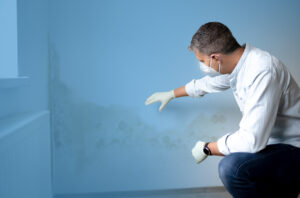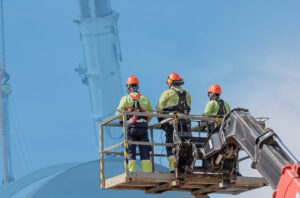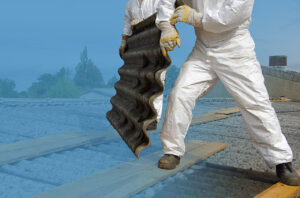It is sometimes claimed that you will be held responsible if you attempt to clear ice or snow beyond your boundaries and someone slips over. However, it is unlikely that you will be sued or held responsible if you take care, clear the snow or ice carefully, make a proper attempt to improve the situation and don’t do anything silly.
The head of the Health and Safety Executive Judith Hackitt has stated that “health and safety legislation is designed to protect people where there is a genuine danger that someone could be killed or seriously injured, not to stop people from getting on with their lives and certainly not to stop people from reducing the risk for themselves and others by clearing snow and ice”
There is a legal duty to maintain safe routes in and around workplaces. Adverse weather conditions such as snow, ice or frost can make walking around especially dangerous, so reasonable steps need to be taken to help prevent serious injury.
The following tips may help you cope better with whatever the season has to throw at us.
The first thing is to Plan:
Identify likely hazardous areas and arrange them in order of risk so you can establish your priorities. Areas used by pedestrians most likely to be affected by snow and ice can include building entrances, car parks, external walkways including emergency routes, sloped areas, steps and areas that remain in the shade.
Before the onset of winter, check you have:
- Adequate stocks of grit/rock salt.
- A good level of lighting provided around all pedestrian and traffic routes. Replace any dead bulbs.
- Slip resistant matting (where necessary), which is in good condition.
- Suitable tools to clear snow properly. Note, larger areas may require clearing by mechanical means.
- Suitable warm clothing and sturdy waterproof footwear with a grippy sole.
When wintery weather is expected:
- Monitor the weather forecast (e.g. smart phone weather apps or the local radio).
- Implement your plan when freezing temperatures are forecast.
- Always wear vi-his when working on or near to traffic routes and in car parks.
Prevent icy surfaces from forming or keep pedestrians away from slippery surfaces by:
- Using grit/rock salt to prevent ice from building up in high risk areas.
- Covering walkways with tarpaulin or similar overnight to make clearing easier in the morning or use an arbour (high enough for people to walk through and which is capable of withstanding snow loading).
- Diverting pedestrians away from slippery areas. Cone or barrier off hazardous routes.
- Close off short cuts or side entrances so efforts can be focused and more effectively maintained.
Shared access and private boundaries:
- Where access is shared it is best to agree responsibilities in writing.
- Where no agreement has been made then ensure your own employees and visitors etc are provided with safe access and egress but not to the detriment of others.
Do not:
- Restrict access to other properties etc by piling snow onto neighbouring land (especially walkways) unless it has been agreed (preferably in writing e.g. email) and is safe to do so.
Getting to grips with gritting:
- The most common method used to de-ice floors is gritting as it is relatively cheap, quick to apply and easy to spread. Rock salt (plain and treated) is the most commonly used ‘grit’. It is the substance used on public roads by the highways authority.
- Salt can stop ice forming and cause existing ice or snow to melt. It is most effective when it is ground down, but this will take far longer on pedestrian areas than on roads.
- Gritting should be carried out when frost, ice or snow is forecast or when walkways are likely to be damp or wet and the floor temperatures are at, or below freezing. The best times are early in evening before the frost settles and/or early in the morning before employees arrive. Salt doesn’t work instantly; it needs sufficient time to dissolve into the moisture on the floor.
- If you grit when it is raining heavily the salt will be washed away, causing a problem if the rain then turns to snow. Compacted snow, which turns to ice, is difficult to treat effectively with grit. Be aware that ‘dawn frost’ can occur on dry surfaces, when early morning dew forms and freezes on impact with the cold surface.
Clearing snow or ice:
- Do it early in the day – it’s easier to move fresh, loose snow.
- Use salt if possible – it will melt the ice or snow and stop it from refreezing overnight (but don’t use the salt from salting bins as this is used to keep roads clear).
- You can use ash and sand if you don’t have enough salt – it will provide grip underfoot.
- Pay extra attention when clearing steps and steep pathways – using more salt may help.
- Don’t forget if you are driving you need to clear your vehicle properly before leaving. If snow falls from your vehicle and causes an accident, then you may be held liable.
- Clear your car bonnet as when the engine warms the snow this may cause the snow to slide up onto your windscreen when driving along.
- Wrap up warm and wear sensible water proof footwear with a good level of insulation.
- If concerned about roofs being overloaded with snow, assess the risk before attempting to clear the snow, be prepared for the sudden release of a lot of snow on gently sloping roofs.
Finally, some things to avoid, do not:
- Put yourself at risk when clearing snow or ice.
- Clear snow or ice near to moving vehicles or operating plant.
- Overexert yourself, stop if you feel cold, take a break and keep warm.
- Use water (at any temperature) to clear ice as it is likely to refreeze causing black ice.
- Attempt to clear gently sloping roofs by working beneath them, clear a section at a time to prevent a sudden release of large volumes of snow.
- Use steps or ladders outside during snowy or icy conditions as snow stuck between the treads on the sole of your shoe, can cause you to slip more easily.
Notes
1: Department for Work and Pensions press release 23/12/14 https://www.gov.uk/government/news/snow-clearing-health-and-safety-myth-shattered
Please speak to your normal PIB Risk Management contact or get in touch using [email protected] if you have any questions regarding ice and snow safety.

New rules for providers of social housing in England

Small but mighty – working safely with nanomaterials

Do you have a MEWP rescue plan?

Changing the asbestos control regime

HSE Launch Motor Vehicle Paint Spraying Campaign
